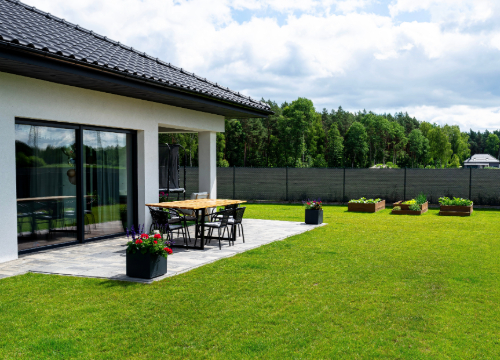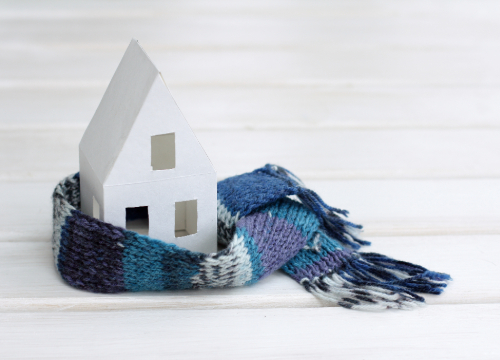How long since you did a fire safety check around your place? The risk of a fire in the home increases in winter as you start to use fires and more appliances like dryers and heaters. It’s important to look at how you can reduce fire risk and improve safety in your home.
This weekend, get together with your family to check your home from a fire safety point of view. It only costs a few dollars to get kitted out with smoke alarms and an extinguisher, but it could save you a lot in the long run. Take a walk around the house, note potential problems, then get them sorted.
Check over your home interior
In the kitchen, make sure the stove top and oven is clean with no spilled fats and burnt food. Also ensure there is no loose fabric, such as drapes or tea towels anywhere close to the cooking surface. Clean the rangehood filters if needed and make sure there’s a charged fire extinguisher in the vicinity. Remember, throwing water on a fat fire will cause it to explode, so never try and use water to put out a kitchen fire.
Now walk through your home, checking that…
- all fire-lighting devices are stored safely and away from children
- lights have the correct watt and bulb size
- electric blankets are not worn or wires twisted (you can take them to your local appliance repair store for electrical safety checking if you’re not sure)
- power boards are not overloaded - major appliances should be plugged into the power socket directly, not through an extension cord
- extension cords are not frayed or worn
- the fireplace is clean and chimney swept
- the dryer filter is free of lint build up and the duct is clear
- heaters are free from anything that may catch alight
Fire extinguishers
There are a range of different types of fire extinguishers available, based on where and what you’re likely to use them on. The best all-round extinguishers are foam ones that smother the fire. Dry powder extinguishers are good too.
Remember the PTASS routine for using an extinguisher:
- Pull the trigger
- Test that the extinguisher works
- Aim at the base of the fire
- Squeeze
- Sweep the fire away
Smoke alarms
Having smoke alarms in rental properties is a legal requirement, but often as a homeowner it's not the first thing you think about. Fire and Emergency New Zealand recommend you have smoke alarms in each bedroom, every living space and the hallway. However, it’s best not to install smoke alarms in the kitchen or laundry, as they will probably overreact to the next piece of burnt toast or load of washing in the dryer. Instead install heat alarms in these areas. A heat alarm is designed to activate when the room reaches a set temperature. So perfect for the kitchen and laundry room.
You can choose from photoelectric or ionisation sensors. Ionisation models are better for fast-burning fires, while photoelectric ones pick up the slow-smouldering ones better.
Have a plan every six months to check your smoke alarms, giving them a gentle vacuum to remove dust and making sure they are still working with fresh batteries.
Gas appliances
If you use gas appliances for water heating, cooking and/or home heating, you should have them checked regularly by a plumber who offers gas servicing. Every appliance needs to be checked periodically to ensure it’s connected properly and free of corrosion, that could lead to gas leaks.
The natural gas used in New Zealand is completely odourless, so gas companies add mercaptan to give it a distinctive odour that enables you to smell a gas leak. It’s a good idea to teach everyone in the family about this gas smell.
In the unlikely event you smell gas or suspect a gas leak inside your home do the following:
- Keep flames and cigarettes away from the area because they may ignite the gas
- Do not operate any electrical switches
- Do not use your mobile phone in the area
- If possible, turn off the gas supply valve at the gas meter
- If it can be done safely, open doors and windows to ventilate the area
- If the smell persists, go outside to a safe place away from your home and call your gas provider.
Create an escape plan
Go through each room in your home and ensure there are at least two exits. While one will be a doorway, the other may have to be a window. Make sure that all windows are easy to open. Decide on a safe point outside where everyone will meet. This means that you’ll know where everyone is, eliminating the worry that someone is trapped inside.
Once you have your escape plan ready, take your family though your home and show them the exits. Explain to them that the best thing you can do in a fire is leave everything behind, get low to avoid the smoke and exit the house is fast as possible. It takes only a few seconds for a fire to grow to dangerous and unmanageable levels, so it’s imperative to get out as fast as possible. You only have one to two minutes to leave once the smoke alarm goes off. It’s a good idea to practice your escape plan every three to six months.
Check over your home exterior
When you next use your BBQ, Fire & Emergency NZ recommend to use the soap bubble test to ensure there are no leaks at any of the gas fittings.
In the garage or garden shed, make sure all flammable liquids are stored safely and not kept where they might overheat in summer.
If you live in the country or on a farm, make sure your lawn isn’t long, overgrown trees and shrubs are trimmed back, and any dead plants are removed. In summer, these become fire hazards.
A few simple steps can save your home
Don’t take anything for granted, invest in smoke alarms and create escape plans. Taking time now to go through your property and make these simple changes can help protect your home and family.
You might also like...
-
 December 2024Lifestyle Blog | State Insurance
December 2024Lifestyle Blog | State InsuranceSurviving the holidays
-
 September 2024Lifestyle Blog | State Insurance
September 2024Lifestyle Blog | State InsuranceSpring prep your home and garden.
-
 June 2024Lifestyle Blog | State Insurance
June 2024Lifestyle Blog | State InsurancePreparing your home for winter
